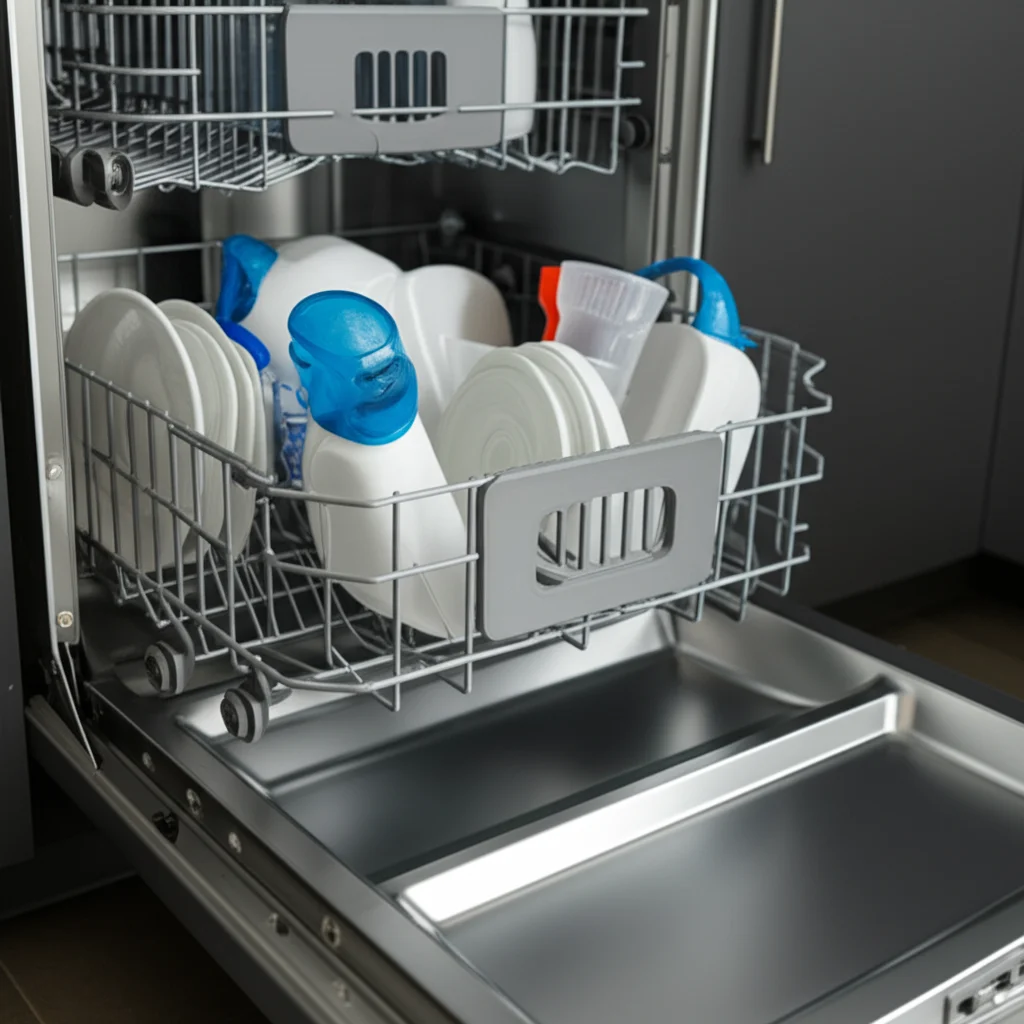· Todd Martin · Home Appliances · 13 min read
How To Put Samsung Washing Machine On Spin Only

Samsung Washing Machine Spin Only: A Complete Guide
Have you ever pulled laundry from your washing machine, only to find clothes still soaking wet? It happens to many of us. Sometimes, you just need to get more water out of your garments without a full wash cycle. This is where the “spin only” function on your Samsung washing machine becomes incredibly useful.
This article gives you clear steps to activate the spin only cycle on various Samsung washing machine models. We explore why this setting is important for your clothes and the machine itself. You will also learn about common issues and quick troubleshooting tips. Our guide helps you achieve perfectly spun laundry every time.
Takeaway
- Identify the “Spin” or “Drain & Spin” cycle on your Samsung washer.
- Load clothes properly, ensuring balance.
- Select the desired spin speed for your fabric type.
- Start the cycle and monitor for issues.
- Troubleshoot common problems like unbalanced loads or drain clogs.
How do I make my Samsung washing machine spin only?
To put your Samsung washing machine on spin only, first load your clothes evenly into the drum. Next, select the “Spin” or “Drain & Spin” cycle from your control panel. Some models might require you to cancel the current cycle first. Adjust the spin speed if needed, then press the “Start” button to begin the cycle.
Understanding the Spin Only Function on Samsung Washers
The spin only function on your Samsung washing machine is a standalone program. It removes excess water from laundry through high-speed rotation. This process uses centrifugal force to push water out of fabrics. It is different from a full wash cycle, which includes washing and rinsing steps. Many people use this setting to reduce drying time.
You might need this function for various reasons. Perhaps a delicate item needs gentle drying after handwashing. Or, maybe your machine stopped mid-cycle, leaving clothes drenched. Using the spin only cycle helps you save energy and time. It also protects your clothes from prolonged dampness. Understanding this feature makes your laundry routine more efficient.
This cycle is a common feature on both front-load and top-load Samsung washing machines. The exact labeling might vary slightly. You could see options like “Spin,” “Drain & Spin,” or even “Rinse & Spin.” Each option serves a specific purpose, but they all involve powerful spinning. Knowing how to access this specific cycle gives you full control over your laundry. We will explain how to find this setting on your machine in the next sections.
Step-by-Step Guide for Front-Load Samsung Washing Machines
Operating the spin only cycle on a Samsung front-load washing machine is simple. First, make sure your washing machine is empty or only contains the items you want to spin. An unbalanced load can cause issues during the spin cycle. Distribute items evenly in the drum. This prevents excessive vibration.
Next, turn on your washing machine. Look at the control panel. You will usually find a dial or buttons. Many front-load models have a dedicated “Spin” or “Drain & Spin” setting. If you see “Drain & Spin,” select that option. If only “Spin” is visible, choose it. Sometimes, you may need to go into a “Special Cycles” menu. You might also need to press a “Cycle Selector” button multiple times.
Once you select the spin cycle, you can often adjust the spin speed. Higher spin speeds remove more water but can be harsher on delicate fabrics. Choose a speed appropriate for your laundry. For example, use a lower speed for delicates and a higher speed for towels. Finally, press the “Start” or “Play” button. Your machine will then drain any remaining water and begin the spin cycle. This helps to make your laundry ready for the dryer or air-drying.
Step-by-Step Guide for Top-Load Samsung Washing Machines
Samsung top-load washing machines also have a convenient spin only option. The steps are similar to front-load models but with some minor differences. Start by ensuring the drum is loaded properly. Distribute your clothes around the agitator or impeller. Overloading can prevent effective spinning.
Turn on your Samsung top-load washer. Look for the cycle selector dial or buttons. Many top-load models feature a “Spin Only” or “Drain & Spin” cycle directly on the main panel. If you are mid-cycle and need to re-spin, you might press “Power” to turn it off, then “Power” again to turn it on. After that, select “Spin Only.” Some models might have a “Rinse & Spin” option; if you do not want to rinse, look for a way to skip the rinse.
After selecting the spin cycle, you can often adjust the spin speed. This setting appears on the digital display or with indicator lights. High spin speeds are good for sturdy items like jeans or blankets. Lower speeds protect delicate items from damage. Once you have chosen your settings, close the lid securely. Then, press the “Start/Pause” button to begin. Your machine will drain, then spin the clothes. This process helps dry your laundry more efficiently.
Adjusting Spin Speed and Options for Specific Fabrics
Choosing the right spin speed is important for your clothes. Samsung washing machines offer various spin speed options. These options range from “No Spin” to “Extra High” or specific RPM (revolutions per minute) settings. A higher spin speed removes more water. This means your clothes will dry faster. However, high speeds can also damage delicate fabrics.
For delicate items like silk, lace, or lingerie, choose a “Low” or “No Spin” setting. This prevents stretching or tearing. For everyday clothes such as cotton shirts and pants, a “Medium” or “Normal” spin speed works well. It balances water removal with fabric care. Heavy items like towels, jeans, or bedding benefit from “High” or “Extra High” spin speeds. These items absorb a lot of water and can handle aggressive spinning.
Always check your garment care labels. These labels often recommend specific washing and drying instructions, including spin speeds. Using the correct spin setting extends the life of your clothes. It also ensures they come out of the washer in good condition. Taking a moment to adjust this setting makes a big difference in laundry results.
You might also find other options like “Rinse & Spin” on some Samsung models. If your clothes need a quick rinse before spinning, this option is useful. But if you just want to remove water, stick to “Spin Only.” Familiarize yourself with your specific model’s control panel. This helps you select the best options every time.
Troubleshooting Common Spin Cycle Issues on Samsung Washers
Sometimes, your Samsung washing machine might not spin properly. This can be frustrating, leaving clothes soaking wet. One common problem is an unbalanced load. If too many heavy items are on one side, the machine stops spinning to prevent damage. Always redistribute laundry evenly in the drum. This often resolves the issue instantly.
Another frequent problem relates to the drain system. If the drain pump or filter is clogged, water cannot exit the machine. The washer will not spin if it cannot drain water. Regularly clean your Samsung washing machine filter to prevent clogs. You might also need to drain water from Samsung washing machine manually if it is full. This helps the spin cycle to start.
Check if the washing machine door is fully closed and latched. For safety reasons, the machine will not spin if the door is open or not secure. Listen for error codes or blinking lights. Your user manual explains what these codes mean. They can point to specific problems like a faulty lid switch or motor issues. If your Samsung washing machine gets stuck on the spin cycle, it often signals a balance or drainage problem.
Finally, ensure the washing machine is level. An unlevel machine can vibrate excessively during the spin cycle. This vibration can cause the machine to stop. Adjust the leveling feet if needed. Sometimes, a banging noise during spin indicates an unlevel machine or an unbalanced load. If your Samsung washing machine vibrates so much, check the leveling first. These simple steps often solve most spin cycle problems without needing professional help.
Maintenance Tips for Optimal Spin Performance
Proper maintenance keeps your Samsung washing machine spinning efficiently. Regular cleaning is key. Over time, lint, detergent residue, and hard water minerals build up inside the drum and components. This buildup can affect drainage and balance. Clean your washer every month using a washing machine cleaner or a mixture of vinegar and baking soda. This helps remove grime. You can find detailed instructions on how to clean a Samsung washing machine for best results.
Always check the drain pump filter. This filter catches small items like coins, buttons, or lint. If it gets clogged, water cannot drain properly. This prevents the machine from spinning. Most Samsung models have an accessible drain filter, often located near the bottom front of the machine. Refer to your user manual for the exact location and cleaning steps. A clean filter ensures smooth water evacuation.
Do not overload your washing machine. Overloading stresses the motor and can lead to unbalanced loads. This makes the machine stop or spin less effectively. Follow the recommended load capacity for your model. Distribute clothes evenly in the drum before starting any cycle. Also, check the hoses. Ensure they are not kinked or blocked. A restricted drain hose will prevent water from leaving the machine.
Lastly, make sure your washing machine is level. If the machine is not stable, it will shake excessively during the spin cycle. This can cause the machine to stop or even damage its internal parts. Use a spirit level to check stability. Adjust the leveling feet as needed. Regular checks and cleaning will help prevent many common spin cycle issues. This also ensures your appliance lasts longer.
When to Seek Professional Help
Even with careful troubleshooting, some issues with your Samsung washing machine’s spin cycle might need expert attention. If you have tried all the basic steps—like balancing the load, cleaning filters, and checking the drain hose—and the machine still will not spin, it could be a more serious problem. This means an internal component might be faulty.
Common signs that warrant professional help include persistent error codes that you cannot resolve. For example, if your machine consistently displays a drainage error despite a clean filter, the drain pump itself might be broken. Or, if the drum does not spin at all, even when empty, it could indicate a motor problem or a broken drive belt. These repairs are complex and usually require specific tools and knowledge.
Strange noises like grinding, squealing, or loud clunking during the spin cycle, even with a balanced load, suggest internal mechanical failure. This might mean issues with the bearings, motor couplings, or suspension system. Attempting to fix these without proper training can lead to further damage. If your washing machine door remains locked after a cycle and you cannot open it, it could be a faulty door latch mechanism. There are ways to open a Samsung washing machine door when locked, but if it recurs, a professional should inspect it.
Also, if your machine is leaking from the bottom during the spin cycle, even if it completes the spin, it needs immediate attention. This could be a hose leak or a pump seal issue. Ignoring it can cause water damage to your home. For complex electrical or mechanical faults, it is best to contact Samsung customer support or a certified appliance repair technician. They have the expertise to diagnose and fix the problem safely and effectively. You can also compare issues with other brands, like learning how to get a Bosch washing machine to spin only, to understand common appliance challenges.
Maximizing Efficiency with Spin Only Cycles
Using the spin only cycle wisely can significantly improve your laundry efficiency. This feature saves energy and time. Clothes that come out of the washing machine nearly dry require less time in the tumble dryer. This translates to lower electricity bills. Air-drying clothes after a good spin also speeds up the process. This is especially useful for items that cannot go into a dryer.
Consider using the spin only cycle for items that are already clean but still damp. For instance, if you handwash delicate sweaters, a quick spin removes most of the water. This allows them to dry faster without damage from excessive heat. It is also perfect for swimsuits or gym clothes that might need an extra squeeze before being hung. The less water in your clothes, the lighter they are, and the quicker they will dry.
This setting helps prolong the life of your clothes by reducing exposure to high dryer heat. It also helps with specific garment care. For instance, if you have a mishap and spill water on dry clothes, you can run them through a spin cycle without re-washing. This prevents them from smelling damp. Understanding these small uses makes your laundry routine smoother and more economical. Embrace this efficient function to make your laundry day easier and more sustainable.
FAQ Section
Q1: Can I add clothes during a spin only cycle on my Samsung washing machine?
No, you cannot add clothes once the spin only cycle starts. For safety, the washing machine door locks during high-speed spinning. It also prevents imbalance. If you need to add an item, you must stop the cycle, add the clothes, close the door, and restart the spin cycle.
Q2: Why does my Samsung washer stop during the spin cycle?
Your Samsung washer likely stops spinning due to an unbalanced load. The machine detects imbalance to prevent damage. Distribute clothes evenly. A clogged drain pump filter or a kinked drain hose can also cause this. Ensure water can drain freely.
Q3: How long does a Samsung spin only cycle usually take?
A typical Samsung spin only cycle usually takes about 10 to 15 minutes. The exact duration depends on the selected spin speed and the amount of water in the clothes. Higher speeds might run slightly longer to ensure maximum water extraction.
Q4: Is it safe to spin very delicate items at high speed?
No, it is not safe to spin very delicate items at high speed. High spin speeds can damage fragile fabrics like silk, lace, or hand-knitted items. Always select a “Low” or “No Spin” option for delicates to prevent stretching, tearing, or creasing.
Q5: What is the difference between “Spin Only” and “Drain & Spin”?
“Spin Only” usually means the machine will just spin the clothes. “Drain & Spin” means the machine will first drain any remaining water from the drum, then proceed with the spin cycle. Most Samsung models combine these functions into a “Drain & Spin” setting for convenience.
Q6: Can a dirty washing machine affect the spin cycle performance?
Yes, a dirty washing machine can definitely affect spin cycle performance. Buildup of lint, detergent residue, or mold can clog the drain pump or filter. This prevents proper water drainage, which is necessary for the spin cycle to activate and run effectively. Regular cleaning helps.
Conclusion
Mastering the spin only function on your Samsung washing machine makes laundry tasks much easier. We have explored the simple steps for both front-load and top-load models. You now understand how to select the right spin speed for various fabrics. We also covered common troubleshooting steps for effective spinning. This includes balancing loads and cleaning filters.
Using the spin only cycle correctly saves time and energy. It helps your clothes dry faster and keeps them in better condition. Remember to perform regular maintenance to ensure your Samsung washing machine performs its best. If issues persist, professional help is available. Take control of your laundry. Use your Samsung washing machine’s spin only feature for more efficient drying and garment care. Your clothes and your energy bill will thank you.
- Samsung Washing Machine Spin Only
- Washing Machine Drain and Spin
- Samsung Washer Settings
- Laundry Tips
- Appliance Care





